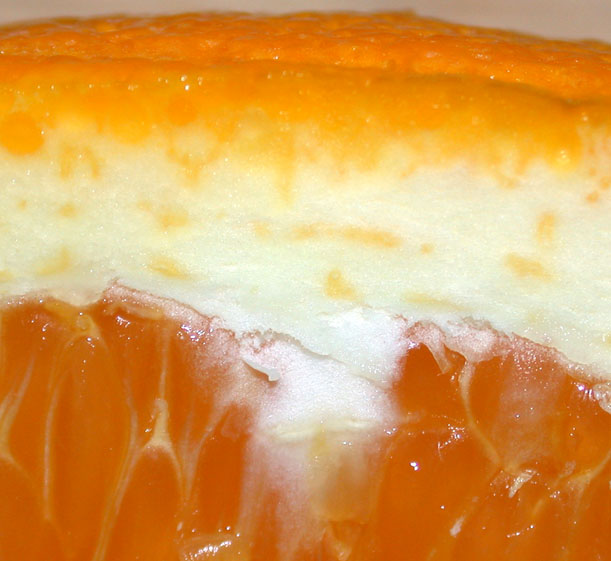Peel (fruit) on:
[Wikipedia]
[Google]
[Amazon]
 Peel, also known as rind or skin, is the outer protective layer of a
Peel, also known as rind or skin, is the outer protective layer of a
 Peel, also known as rind or skin, is the outer protective layer of a
Peel, also known as rind or skin, is the outer protective layer of a fruit
In botany, a fruit is the seed-bearing structure in flowering plants that is formed from the ovary after flowering.
Fruits are the means by which flowering plants (also known as angiosperms) disseminate their seeds. Edible fruits in partic ...
or vegetable which can be peeled off. The rind is usually the botanical exocarp, but the term exocarp also includes the hard cases of nuts
Nut often refers to:
* Nut (fruit), fruit composed of a hard shell and a seed, or a collective noun for dry and edible fruits or seeds
* Nut (hardware), fastener used with a bolt
Nut or Nuts may also refer to:
Arts, entertainment, and media Com ...
, which are not named peels since they are not peeled off by hand or peeler, but rather shells because of their hardness.
A fruit with a thick peel, such as a citrus
''Citrus'' is a genus of flowering trees and shrubs in the rue family, Rutaceae. Plants in the genus produce citrus fruits, including important crops such as oranges, lemons, grapefruits, pomelos, and limes. The genus ''Citrus'' is nati ...
fruit, is called a hesperidium. In hesperidia, the inner layer (also called '' albedo'' or, among non-botanists, ''pith'') is peeled off together with the outer layer (called flavedo), and together they are called the peel. The flavedo and albedo, respectively, are the exocarp and the mesocarp. The juicy layer inside the peel (containing the seeds) is the endocarp.
Uses
Depending on the thickness and taste, fruit peel is sometimes eaten as part of the fruit, such as withapple
An apple is an edible fruit produced by an apple tree (''Malus domestica''). Apple trees are cultivated worldwide and are the most widely grown species in the genus '' Malus''. The tree originated in Central Asia, where its wild ances ...
s. In some cases the peel is unpleasant or inedible, in which case it is removed and discarded, such as with banana
A banana is an elongated, edible fruit – botanically a berry (botany), berry – produced by several kinds of large herbaceous flowering plants in the genus ''Musa (genus), Musa''. In some countries, Cooking banana, bananas used for ...
s or grapefruits.
The peel of some fruits — for example, pomegranates
The pomegranate (''Punica granatum'') is a fruit-bearing deciduous shrub in the family Lythraceae, subfamily Punicoideae, that grows between tall.
The pomegranate was originally described throughout the Mediterranean region. It was introduc ...
— is high in tannins and other polyphenols, and is employed in the production of dyes.
The peel of citrus fruits is bitter and generally not eaten raw, but may be used in cooking. In gastronomy, the outermost, colored part of the peel is called the zest, which can be scraped off and used for its tangy flavor. A large piece of citrus peel, called a " twist", is often used to garnish cocktails. The fleshy white part of the peel, bitter when raw in most species, is used as succade or is prepared with sugar to make marmalade or fruit soup. The peel can also be candied, or dried to produce a seasoning (e.g. chenpi
Chenpi, chen pi, or chimpi is sun-dried mandarin orange peel used as a traditional seasoning in Chinese cooking and traditional medicine. It is aged by storing them dry. The taste is first slightly sweet, but the aftertaste is pungent and bitter ...
).
Nutrition
In a 100 gram reference amount, raw orange peel supplies 97calorie
The calorie is a unit of energy. For historical reasons, two main definitions of "calorie" are in wide use. The large calorie, food calorie, or kilogram calorie was originally defined as the amount of heat needed to raise the temperature of ...
s, with dietary fiber and vitamin C
Vitamin C (also known as ascorbic acid and ascorbate) is a water-soluble vitamin found in citrus and other fruits and vegetables, also sold as a dietary supplement and as a topical 'serum' ingredient to treat melasma (dark pigment spots) a ...
in rich content having 42% and 227% of the Daily Value (DV), respectively. Calcium
Calcium is a chemical element with the symbol Ca and atomic number 20. As an alkaline earth metal, calcium is a reactive metal that forms a dark oxide-nitride layer when exposed to air. Its physical and chemical properties are most similar t ...
content is 16% of the DV, with no other micronutrient
Micronutrients are essential dietary elements required by organisms in varying quantities throughout life to orchestrate a range of physiological functions to maintain health. Micronutrient requirements differ between organisms; for example, huma ...
s in significant amounts. A {{convert, 1, oz, g serving of raw orange peel provides 63% DV for vitamin C and 12% DV for dietary fiber.
See also
* Banana peel * Biorefinery: conversion of citrus peel to succinic acid *Fruit anatomy
Fruit anatomy is the plant anatomy of the internal structure of fruit. Fruits are the mature ovary or ovaries of one or more flowers. They are found in three main anatomical categories: aggregate fruits, multiple fruits, and simple fruits. A ...
, describing the botanical terms of fruit and skin layers
* Peeler
* Zest (ingredient)
References